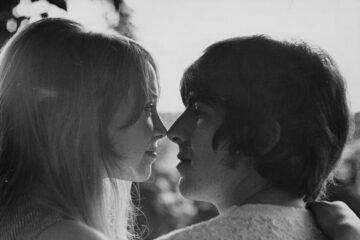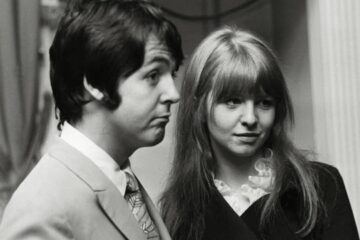On the evening of August 29, 1966, The Beatles, having just completed a show at Candlestick Park in San Francisco, were hustled into a truck to leave the venue. Paul McCartney, who had been the lone holdout on an opinion shared by the other three members of the band, spoke up and finally agreed: This would be the last live show for them in the foreseeable future.
As it turned out, it would be their last live show ever, not counting their abbreviated rooftop performance in 1969. What brought them to that point? And what were the ramifications of that choice? Let’s go back in time to one of the most momentous decisions in the history of music.
The Long and Tiring Road
Although The Beatles unofficially formed when Paul McCartney met John Lennon in 1957, their steady touring didn’t truly begin until 1960, when they headed to Germany. From that point forward, they maintained an intense schedule of live shows. That schedule was initially manageable by vehicle travel, but, as they gained worldwide popularity, it meant airplane trips galore.
As they climbed the rungs of stardom and began playing bigger and bigger venues, the enthusiasm of the members stayed high. But as they began to accomplish everything they had initially set out to do, the novelty started to wear off. The massive show at Shea Stadium in New York in 1965 could be seen as a kind of tipping point, after which the Fab Four started to lose their taste for touring.
The reasons were numerous. Even as the venues grew, the technology wasn’t keeping up. Somewhat primitive amplifiers in arenas and stadiums reduced the nuances of The Beatles’ sound to an indistinguishable blare. It didn’t help that the kids screaming in the crowd often blotted out the noise the group was making anyway. The four men felt the level of their live performances was rapidly declining because of all this.
By contrast, the group was improving by leaps and bounds with the music they were making in the studio. Alas, that music often couldn’t be replicated by just four instruments on a stage. George Harrison was the first within the group to openly wonder if they should quit playing live.
’66 Clinches It
If The Beatles were somewhat on the fence about giving up touring when the subject was first broached, 1966 left them with little doubt. Every stop seemed to present some new incident. When they played overseas, ugly incidents in Japan and the Philippines left them shaken.
America had always welcomed The Beatles as conquering heroes, but the U.S. portion of the tour turned out to be little better. The catalyst for the discontent was the publication of John Lennon’s infamous interview, in which he compared the group’s popularity to that of Jesus. That led to mass protests and even the burning of Beatles records and memorabilia. Lennon made a hasty apology, looking for all the world like he really wanted to tell everybody off instead.
It was now clear that there was no going back. As mentioned, even McCartney, who worried about what would happen to the group if they stopped touring, realized what needed to happen. He asked a Beatles’ associate to record the show in San Francisco for posterity, likely knowing what an important show this would be in their history. The Beatles left the stage in agreement they would schedule no follow-up tours.
They didn’t take the decision lightly. Harrison apparently mused out loud on the plane ride home about whether this meant that he was no longer a Beatle. In truth, one era was ending, but another amazing one was about to begin.
Off the Stage and Into the Studio
When 1967 began, a refreshed gaggle of Beatles headed into Abbey Road Studios brimming with concepts and songs, and they went on to deliver maybe the best single year of music any artist has ever managed. Relieved of the burden of going on tour, they spent more time honing the sounds and pushing boundaries.
The Get Back/Let It Be project of 1969, as originally envisioned by McCartney, likely would have pushed them back to some sort of live music element in their careers if they had managed to properly finish it. McCartney hoped the idea would bring them back together, but it only served to widen the fissures within the group.
Thus, The Beatles never did return to touring after that San Francisco swan song. Who knows what might have happened if they had? But considering what they delivered once the live shows were out of the picture, it’s hard to argue with the decision they solidified on that chilly night in Northern California.



